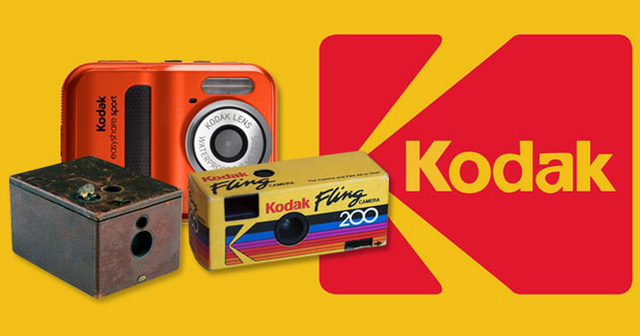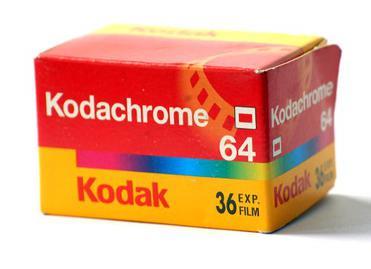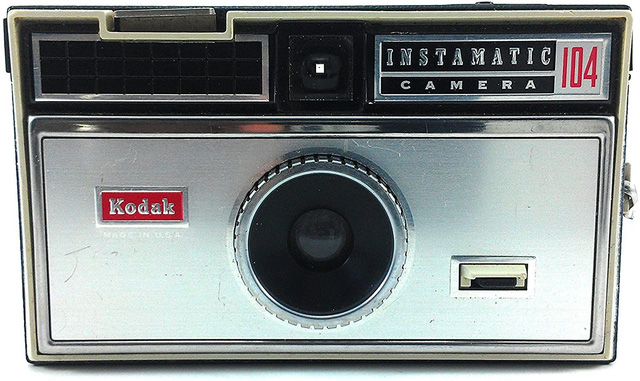Kodak: The once king of photography struggled to make a living because he was slow to innovate
- Tram Ho
Founded over a hundred years ago by businessman George Eastman, Kodak’s goal is to change the way people take pictures. The Kodak name and the company’s logo come from his boss’s special passion for the K, which George Eastman describes as a “strong and edgy” letter. The name Kodak is simple, short, but it is interesting and makes a bold impression on the public.

The founder wants his customers to be able to capture many great moments through its products. However, the real products Kodak targets are film and printed photos, not cameras. Through a razor and blade strategy – a model in which an item is sold at a low price (or even at no cost) in order to increase sales of associated products, the firm sell their cameras at relatively low prices, but make a huge profit from film production and photo printing.
In 1888, Kodak introduced its first camera in the United States. It’s a leather-box camera with round lenses and a button on the side to take pictures. The camera invented by George Eastman sold for 25 USD became extremely popular in America at that time. Thanks to its reasonable price and user-friendly design, it is considered one of the most important inventions of the photography industry, especially for amateurs.

Kodak’s first camera in 1888 (Image: Pinterest)
With this invention, Kodak implemented its strategy perfectly. A camera can take about 100 pictures; After the capture is over, users can return the camera to Eastman Kodak for $ 10 to replace the new film roll and the negative of the photos they’ve taken before. This helped its film and photo print sales soar after the camera was released.
Kodak continued his razor and razor strategy years later with its other cameras and took the company to new heights. By 1935, they introduced Kodachrome, the first color film to be tested and used successfully for both film and still photography. Thanks to this Kodak invention, once again the entire photography industry changed. Color photographs taken during World War II are extremely valuable material for the next generation, and it would not have been possible without the wonderful tools from Kodak.

Kodachrome color film really has completely changed the photography industry over the years (Image: Kodak)
By 1962, Kodak’s revenue exceeded $ 1 billion for the first time; 1 year later, they continue to release Kodak Instamatic camera with many outstanding features and maximum support for amateur photographers. Within 7 years of its launch, Kodak has sold 50 million Kodak Instamatic cameras. In 1972, Kodak’s worldwide sales reached $ 3 billion. In 1976, they dominated the entire film and camera market with 85% of the camera sales and 90% of the film sales, with almost no competitor able to compete with Kodak during the period. this paragraph.

Kodak Instamatic camera (Image: Ebay)
In 1975, Kodak engineer Steve Sasson came up with an invention that completely changed the photography industry – digital cameras; This is the third time that an invention has had a huge impact on the industry’s future. Instead of focusing on developing new technology, however, the studio ignored it, arguing that its core business – movies and photos would be negatively affected. Therefore, the company continued to develop its traditional products and completely ignored the development of technology, even though they were the inventors of it. In the following years, Kodak still lived well with its policy: in 1981, its revenue exceeded $ 10 billion for the first time.
However since 1980, the photography industry began to shift to digital; sales of film and film cameras began to decline gradually. With its dominance in the film and camera market, Kodak has little interest in competition from its competitors. At the same time, Kodak executives maintain their opinion and believe that digital cameras will not be able to replace film cameras, given that the majority of customers are still too new to the new technology.

Digital camera sales continued to increase while film and film camera sales declined dramatically over time. (Photo: Brand-mind)
Sluggishly in transition, but its sluggishness in taking advantage of the opportunity has threatened its strong business by Fujifilm. After missing an opportunity to sponsor Fujifilm’s 1984 Los Angeles Olympics in the hands of Fujifilm, Kodak let his rival become more popular in the mainstream US market.
Fujifilm, with the selling price of products up to 20% lower with relatively good quality, and the unimpressive display at the Olympics has taken away a large number of Kodak customers. In just 7 years (from 1990 to 1997), Fujifilm increased its market share in the US from 10% to 17%. Kodak’s financial results as of December 31, 1997 showed that the company’s revenue decreased from $ 15.97 billion a year earlier to $ 14.36 billion; Its market share also decreased from 80.1% to 74.7% in the United States.
After all, Kodak focused on digital cameras, but didn’t give up on the film business despite its declining sales. In the early 2000s, digital cameras were nothing too unfamiliar with Sony as a leader.
In 2001, Kodak held No. 2 in the sales of digital cameras in the United States (behind Sony) but lost $ 60 per camera sold. The film business, which is Kodak’s strength, dropped 18% in revenue compared to the same period last year; at the same time, the internal conflicts between the film and digital cameras division also weakened the company.
Kodak’s price advantage eventually turned to weakness, as Asian rivals with cheap labor and raw materials launched digital cameras with much lower prices. This caused Kodak’s market share in the US to nearly halve in just the next two years, from 27% to 15%. By 2010, Kodak’s market share was only 7%, behind Sony, Canon Nikon and several other camera manufacturers. In 2009, Kodak stopped producing the film that made up its brand, the Kodachrome.

Kodak’s camera sales and sales have declined dramatically since 2007 (Image: Techcrunch)
Not stopping here, the increasing number of camera users on smartphones starts to decrease. All camera companies have been hit hard. This led Kodak to redirect its business to home photo printers, high-speed commercial inkjet printers, inks and packaging. Initially, their conversion took place relatively effectively, but gradually, customers prefer to keep images on memory devices, social networks (typically Instagram), preventing the company from Maintaining these businesses for a long time, typically their withdrawal from the consumer inkjet printer market in September 2012.

The impact of mobile phones on camera sales (Image: Lumen Learning)
In early 2012, Kodak received a warning from the New York Stock Exchange (NYSE) announcing that the company’s average closing price was below $ 1 for 30 consecutive days; And if they fail to raise the close above $ 1 in the next 6 months, they will be delisted. On January 3, 2012, shares of Kodak stopped at 76 cents; compared to $ 90 in 1997, this is a huge drop. 16 days later, the company filed for bankruptcy protection, delisting the NYSE, and received a $ 950 million 18-month credit from Citigroup to continue operations.
However, just two years later, Kodak announced that it had successfully restructured and avoided bankruptcy; it has restructured itself to become a tech company focused on corporate imaging.
Until now, Kodak continues to operate in the fields of Printing Systems, Enterprise Inkjet Systems, 3D Printing and Packaging, Software and Solutions, Camera Films. In 2016, the company launched the Super 8 series of cameras at CES. Especially in 2018, the company re-produced the Ektachrome film camera for film cameras. However, as of 2019, Kodak’s revenue was only 1.2 billion USD, which is only 1/10 of its revenue in 1981.

Kodak’s Super8 camera (Image: Toms Guide)
After all, Kodak still could not regain the unique status as the 80’s of the last century. The delay in the transition to digital cameras and image storage methods and the overgrowth of smartphones have made them from the king of photography to being a company with The businesses are not really related to what makes their brand. However, there is no denying that Kodak’s inventions have really changed attitudes and brought photography to more people, laying the foundation for the development of many technologies to date. in.
Source : Genk
